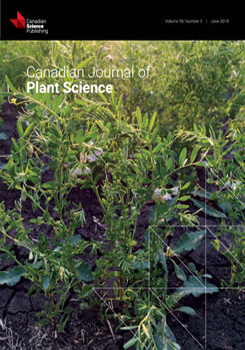Recent canola acreage and production in western Canada have reached record high levels. Field experiments were conducted from 2014 to 2016 on land previously seeded to continuous canola for 6 yr at three Canadian Prairie sites. We determined that more intensive seed inputs, fertilizer, fungicide, tillage, or chaff removal could increase continuous canola yields compared with a “standard practice” (SP) treatment or match yields compared with canola in rotation. Recommended or 50% higher fertility levels alone or in combination with a higher seeding rate, tillage, chaff removal, or additional fungicide were applied to the same plots in three successive years to determine effects after 1, 2, and 3 yr of treatment imposition. In continuous canola, blackleg incidence and severity were both reduced by fungicide treatment. In rotations where canola was preceded by wheat, blackleg incidence and severity were much lower than in continuous canola. None of the treatments improved continuous canola yields compared with SP after a single year of treatment imposition. In subsequent years, canola yield increases compared with SP usually occurred as a result of additional fertilizer, seed, or fungicide. In the final year, canola yield loss due to continuous canola was largely rescued by additional seed and fertilizer. Without additional inputs, and when preceded by a different crop, canola yields averaged 11% greater than the average of all continuous canola treatments. High fertility regimes generally reduced oil content and increased protein content relative to standard fertility in continuous canola or relative to canola preceded by wheat.
How to translate text using browser tools
3 February 2018
Attempts to rescue yield loss in continuous canola with agronomic inputs
K.N. Harker,
M.D. Hartman,
B.D. Tidemann,
J.T. O’Donovan,
T.K. Turkington,
N.Z. Lupwayi,
E.G. Smith,
R.M. Mohr
ACCESS THE FULL ARTICLE
It is not available for individual sale.
This article is only available to subscribers.
It is not available for individual sale.
It is not available for individual sale.

Canadian Journal of Plant Science
Vol. 98 • No. 3
June 2018
Vol. 98 • No. 3
June 2018




